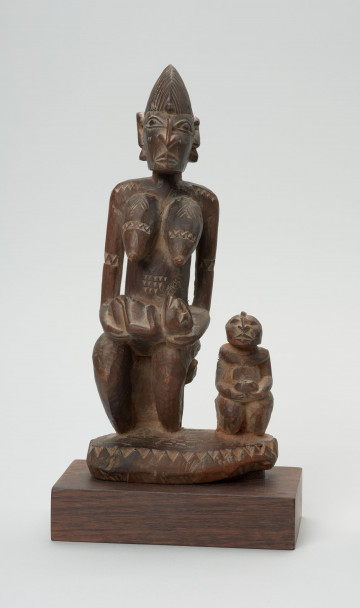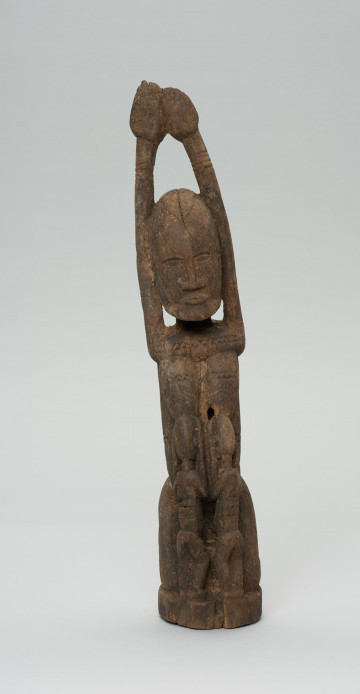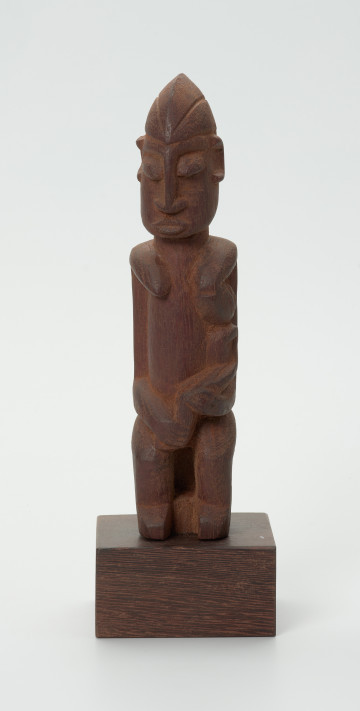
Figure - woman with child
między 1951 — 2000
National Museum in Szczecin
Part of the collection: Collection of Dogonian art
Dogon art abounds in depictions of a woman and child. They symbolically refer to maternal love and female fertility valued in Africa. The birth of a child is a great event for a woman and her family. The birth is assisted by the midwife's relatives, including an experienced midwife and a young mother that still has milk. She will then feed the newborn until the natural mother begins. The Dogon woman gives birth in a sitting position. Once the baby is born, the midwife lays it on the threshing floor. Then, by applying appropriate pressure to the abdomen of the midwife, she helps her deliver the placenta. After that, she grabs the baby in her arms, turns him over to face the ground and brings him closer so that he touches the surface with his arms and legs. These procedures allow the child to take over the souls intended for it. Ogotemmeli Dolo justified the custom to Marcel Griaule as follows: The birth of only children [...] was mitigated somewhat by giving people a double soul, which the Nommo drew on the ground next to those giving birth. The newborn would absorb the soul when he was lifted above the drawing by holding his hips so that he touched the ground with his hands and feet. After these procedures, the midwife cuts the umbilical cord but does not tie it. Every morning the umbilical cord is washed with lukewarm water and rubbed with warm peg oil until it falls off. Then, it is stored in an earthenware dish, as is the placenta, which is considered the baby's twin brother. The vessel with the placenta is buried in the courtyard of the house inside the homestead. The place is marked with stones, three for the birth of a boy and four for a girl. The placenta buried in the family homestead makes the child strongly connected to the home. It is very important to the Dogon, and even if the newborn is born outside the family ginna, its placenta is meticulously packed and carried home.
Ewa Prądzyńska
Author / creator
Dimensions
cały obiekt: height: 39 cm, width: 7,5 cm
Object type
figure
Creation time / dating
Creation / finding place
Identification number
Location / status

między 1951 — 2000
National Museum in Szczecin

między 1951 — 2000
National Museum in Szczecin

między 1951 — 2000
National Museum in Szczecin
DISCOVER this TOPIC
Museum of King Jan III's Palace at Wilanów
DISCOVER this PATH
Educational path